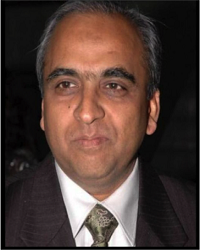Could not find what you are looking for?
- Treatments & Procedures
- Paravalvular Leak Closure- Types, Procedure, Cost In India, Risks, Recovery and Benefits
Paravalvular Leak Closure- Types, Procedure, Cost in India, Risks, Recovery and benefits
Best hospital for Paravalvular Leak Closure in India
What is Paravalvular Leak Closure?
Paravalvular leak closure is a medical procedure designed to address leaks that occur around heart valves, specifically after valve replacement surgery. When a heart valve is replaced, it is crucial for the new valve to create a tight seal with the surrounding heart tissue. However, in some cases, a gap or leak can develop around the valve, allowing blood to flow inappropriately between the heart chambers or into the surrounding areas. This condition is known as a paravalvular leak.
The primary purpose of paravalvular leak closure is to restore normal blood flow and pressure within the heart, thereby improving the patient's overall heart function. The procedure is typically performed using minimally invasive techniques, which can lead to quicker recovery times and less discomfort compared to traditional open-heart surgery. Paravalvular leaks can lead to various complications, including heart failure, anemia, and increased risk of infection, making timely intervention essential.
Why is Paravalvular Leak Closure Done?
Paravalvular leak closure is recommended when patients exhibit symptoms or conditions that indicate the presence of a paravalvular leak. Common symptoms include:
- Shortness of breath, especially during physical activity
- Fatigue or weakness
- Swelling in the legs or abdomen
- Palpitations or irregular heartbeats
- Chest pain or discomfort
These symptoms can arise due to the heart's inability to pump blood effectively, leading to congestion in the lungs or other areas of the body. In some cases, patients may not experience noticeable symptoms but may be diagnosed with a paravalvular leak through imaging studies, such as echocardiograms or cardiac MRI.
The decision to perform paravalvular leak closure is typically made after a thorough evaluation by a cardiologist or cardiac surgeon. This evaluation may include assessing the severity of the leak, the patient's overall health, and any underlying conditions that could complicate the procedure. If the leak is significant enough to impact the patient's quality of life or lead to serious complications, paravalvular leak closure may be strongly recommended.
Indications for Paravalvular Leak Closure
Several clinical situations and diagnostic findings can indicate the need for paravalvular leak closure. These include:
- Echocardiographic Evidence: Imaging studies, particularly echocardiograms, can reveal the presence and severity of a paravalvular leak. If the echocardiogram shows significant regurgitation or abnormal blood flow patterns around the valve, this may warrant intervention.
- Symptoms of Heart Failure: Patients exhibiting symptoms of heart failure, such as persistent shortness of breath, fatigue, or fluid retention, may be candidates for the procedure. The presence of these symptoms, combined with imaging findings, can indicate that the leak is affecting the heart's function.
- Hemolysis: In some cases, a paravalvular leak can lead to hemolysis, a condition where red blood cells are destroyed faster than they can be produced. This can result in anemia and other complications. If hemolysis is detected and attributed to a paravalvular leak, closure may be necessary.
- Infective Endocarditis: Patients with a history of infective endocarditis, an infection of the heart valves, may develop paravalvular leaks. If a leak is identified in these patients, closure may be indicated to prevent further complications.
- Previous Valve Replacement: Patients who have undergone valve replacement surgery and are experiencing new or worsening symptoms may require evaluation for a paravalvular leak. If a leak is confirmed, closure may be necessary to restore proper heart function.
- Clinical Deterioration: If a patient’s clinical status is deteriorating despite optimal medical management, and a paravalvular leak is suspected, closure may be considered as a therapeutic option.
In summary, paravalvular leak closure is a critical procedure for patients experiencing complications from leaks around heart valves. By addressing these leaks, healthcare providers can significantly improve patients' quality of life and reduce the risk of serious health issues.
Contraindications for Paravalvular Leak Closure
While paravalvular leak closure can be a beneficial procedure for many patients, certain conditions or factors may render a patient unsuitable for this intervention. Understanding these contraindications is crucial for both patients and healthcare providers to ensure safety and efficacy.
- Severe Left Ventricular Dysfunction: Patients with significantly reduced heart function may not tolerate the procedure well. The stress of the intervention could exacerbate heart failure symptoms.
- Active Infection: If a patient has an active infection, particularly endocarditis, it is essential to treat this condition before considering paravalvular leak closure. Performing the procedure during an active infection can lead to serious complications.
- Uncontrolled Arrhythmias: Patients with arrhythmias that are not well-managed may face increased risks during the procedure. It is vital to stabilize any irregular heart rhythms prior to intervention.
- Severe Pulmonary Hypertension: High blood pressure in the lungs can complicate the procedure and increase the risk of adverse outcomes. Patients with severe pulmonary hypertension may need alternative treatments.
- Anatomical Considerations: Certain anatomical abnormalities, such as significant calcification of the valve or surrounding structures, may make it difficult to access the leak or place closure devices effectively.
- Coagulopathy: Patients with bleeding disorders or those on anticoagulant therapy may face increased risks of bleeding during and after the procedure. A thorough evaluation of coagulation status is necessary.
- Patient Preference: Some patients may choose not to undergo the procedure due to personal beliefs or concerns about the risks involved. Informed consent is a critical part of the decision-making process.
- Inability to Comply with Follow-Up Care: Successful outcomes often depend on post-procedure monitoring and follow-up. Patients who cannot commit to this may not be ideal candidates.
- Severe Comorbidities: Patients with significant other health issues, such as advanced kidney disease or severe lung disease, may not tolerate the procedure well and could face higher risks.
By carefully evaluating these contraindications, healthcare providers can ensure that paravalvular leak closure is performed on the most suitable candidates, maximizing the chances of a successful outcome.
How to Prepare for Paravalvular Leak Closure
Preparation for paravalvular leak closure is essential to ensure a smooth procedure and optimal recovery. Here are the steps patients can expect to follow:
- Pre-Procedure Consultation: Patients will have a detailed consultation with their cardiologist or interventional cardiologist. This discussion will cover the procedure, its benefits, risks, and what to expect.
- Medical History Review: A thorough review of the patient’s medical history will be conducted. This includes discussing any previous heart surgeries, current medications, allergies, and existing health conditions.
- Diagnostic Tests: Patients will undergo several tests to assess their heart function and the severity of the leak. Common tests include:
- Echocardiogram: This ultrasound test provides images of the heart's structure and function, helping to visualize the leak.
- Electrocardiogram (ECG): This test monitors the heart's electrical activity and can identify any arrhythmias.
- Chest X-ray: This imaging test helps evaluate the heart and lungs.
- Blood Tests: These tests assess kidney function, liver function, and blood clotting ability.
- Medication Review: Patients may need to adjust their medications before the procedure. This could involve stopping certain blood thinners or adjusting dosages. It’s crucial to follow the healthcare provider's instructions regarding medications.
- Fasting Instructions: Patients are typically advised to fast for a certain period before the procedure, usually for at least 6-8 hours. This is important to reduce the risk of complications during sedation or anesthesia.
- Arranging Transportation: Since the procedure may involve sedation, patients should arrange for someone to drive them home afterward. It’s not safe to drive immediately after the procedure.
- Pre-Procedure Checklist: Patients should prepare a checklist of items to bring to the hospital, including identification, insurance information, and any necessary medical records.
- Emotional Preparation: It’s normal to feel anxious before a medical procedure. Patients are encouraged to discuss any concerns with their healthcare team and consider relaxation techniques to help manage anxiety.
By following these preparation steps, patients can help ensure that they are ready for their paravalvular leak closure, leading to a smoother experience and better outcomes.
Paravalvular Leak Closure: Step-by-Step Procedure
Understanding the step-by-step process of paravalvular leak closure can help alleviate anxiety and prepare patients for what to expect. Here’s a breakdown of the procedure:
- Arrival at the Hospital: Patients will arrive at the hospital or outpatient center where the procedure will take place. They will check in and may be asked to change into a hospital gown.
- Pre-Procedure Assessment: Before the procedure begins, healthcare providers will conduct a final assessment, including checking vital signs and confirming the procedure details.
- Sedation and Anesthesia: Patients will receive sedation to help them relax. In some cases, local anesthesia may be used to numb the area where the catheter will be inserted. In other cases, general anesthesia may be administered.
- Accessing the Blood Vessel: The interventional cardiologist will make a small incision, usually in the groin or wrist, to access a blood vessel. A catheter (a thin, flexible tube) will be inserted into the blood vessel and guided to the heart.
- Imaging Guidance: Throughout the procedure, imaging techniques such as fluoroscopy (real-time X-ray) and echocardiography will be used to visualize the heart and the paravalvular leak.
- Locating the Leak: The catheter will be maneuvered to the site of the paravalvular leak. The cardiologist will carefully assess the size and location of the leak.
- Closure Device Placement: Once the leak is located, a closure device will be deployed through the catheter. This device is designed to seal the leak and restore normal blood flow. The cardiologist will ensure that the device is positioned correctly.
- Confirming Success: After placing the closure device, the cardiologist will perform additional imaging to confirm that the leak has been successfully closed and that there are no complications.
- Removing the Catheter: Once the procedure is complete, the catheter will be carefully removed. Pressure will be applied to the insertion site to prevent bleeding.
- Recovery: Patients will be moved to a recovery area where they will be monitored for a few hours. Vital signs will be checked regularly, and patients will be observed for any immediate complications.
- Post-Procedure Instructions: After recovery, patients will receive instructions on how to care for the insertion site, medications to take, and follow-up appointments. It’s important to adhere to these guidelines for optimal recovery.
- Discharge: Once the healthcare team is satisfied with the patient’s recovery, they will be discharged. Patients should have someone accompany them home, as they may still feel groggy from sedation.
By understanding the step-by-step process of paravalvular leak closure, patients can feel more prepared and informed about their upcoming procedure.
Risks and Complications of Paravalvular Leak Closure
Like any medical procedure, paravalvular leak closure carries certain risks and potential complications. It’s important for patients to be aware of these to make informed decisions about their care. Here’s a list of both common and rare risks associated with the procedure:
Common Risks
- Bleeding: Minor bleeding at the catheter insertion site is common. In some cases, more significant bleeding may occur, requiring additional intervention.
- Infection: There is a risk of infection at the insertion site or within the heart. Antibiotics may be given to reduce this risk.
- Arrhythmias: Some patients may experience irregular heart rhythms during or after the procedure. Most arrhythmias are temporary and resolve on their own.
- Vascular Complications: Damage to the blood vessels can occur during catheter insertion, leading to complications such as hematoma (a localized collection of blood outside of blood vessels).
- Device Malposition: In rare cases, the closure device may not be positioned correctly, necessitating further intervention.
Rare Risks
- Stroke: There is a small risk of stroke due to blood clots that may form during the procedure. This risk is generally low but is a serious concern.
- Heart Attack: Although rare, there is a potential risk of heart attack during the procedure, particularly in patients with pre-existing heart conditions.
- Perforation of Heart Structures: In very rare cases, the catheter or closure device may perforate the heart or surrounding structures, leading to serious complications.
- Need for Surgical Intervention: If complications arise that cannot be managed through catheter-based techniques, emergency surgery may be required.
- Long-term Device Complications: Some patients may experience long-term issues related to the closure device, such as migration or erosion.
While the risks associated with paravalvular leak closure are important to consider, it’s essential to remember that many patients experience significant benefits from the procedure. Discussing these risks with a healthcare provider can help patients weigh the potential benefits against the risks, leading to informed decision-making regarding their treatment options.
Recovery After Paravalvular Leak Closure
The recovery process after a paravalvular leak closure is crucial for ensuring optimal healing and long-term success of the procedure. Generally, patients can expect to stay in the hospital for one to three days post-surgery, depending on their overall health and the complexity of the procedure. During this time, healthcare providers will monitor vital signs, manage pain, and ensure that there are no complications.
Expected Recovery Timeline
- First 24 Hours: Patients will be closely monitored in a recovery area. Pain management will be initiated, and patients may be encouraged to start moving around gently.
- Days 2-3: Most patients will be transferred to a regular hospital room. They may begin light activities, such as walking short distances. Medical staff will provide guidance on managing any discomfort and will monitor for signs of complications.
- Week 1: Patients are usually discharged within a few days. At home, they should continue to rest and gradually increase their activity level. Light household tasks can be resumed, but heavy lifting and strenuous exercise should be avoided.
- Weeks 2-4: Follow-up appointments will be scheduled to assess recovery. Patients can typically return to normal activities, including work, but should still avoid high-impact exercises.
- 1-3 Months: Most patients will feel back to their usual selves, with full recovery expected within three months. Regular follow-ups with the healthcare provider will ensure that the heart is functioning well and that there are no further leaks.
Aftercare Tips
- Medication Adherence: Take prescribed medications as directed to prevent infection and manage pain.
- Diet: A heart-healthy diet rich in fruits, vegetables, whole grains, and lean proteins is recommended. Avoid excessive salt and processed foods.
- Hydration: Drink plenty of fluids to stay hydrated, but consult your doctor if you have any restrictions.
- Activity Level: Gradually increase physical activity as tolerated, but listen to your body and rest when needed.
- Signs of Complications: Be vigilant for symptoms such as increased shortness of breath, chest pain, or swelling in the legs, and contact your healthcare provider if these occur.
Benefits of Paravalvular Leak Closure
The benefits of paravalvular leak closure extend beyond just the immediate repair of the leak. Patients often experience significant health improvements and enhanced quality of life following the procedure.
- Symptom Relief: Many patients report a reduction in symptoms such as fatigue, shortness of breath, and palpitations. This improvement can lead to a more active lifestyle and better overall health.
- Improved Heart Function: Closing the leak can enhance the heart's efficiency, allowing it to pump blood more effectively. This can lead to better oxygenation of the body and improved organ function.
- Reduced Risk of Complications: By addressing the leak, patients may lower their risk of serious complications, such as heart failure or stroke, which can arise from untreated paravalvular leaks.
- Enhanced Quality of Life: With improved symptoms and heart function, patients often find they can engage in activities they previously avoided, leading to a more fulfilling life.
- Long-term Outcomes: Studies have shown that patients who undergo paravalvular leak closure often experience better long-term outcomes compared to those who do not receive treatment, including lower rates of hospitalization and improved survival rates.
Cost of Paravalvular Leak Closure in India
The average cost of paravalvular leak closure in India ranges from ₹1,50,000 to ₹3,00,000. Price can vary based on several key factors:
- Hospital: Different hospitals have varying pricing structures. Renowned institutions like Apollo Hospitals may offer comprehensive care and advanced facilities, which can influence the overall cost.
- Location: The city and region where the Partial Laryngectomy is performed can affect costs due to differences in living expenses and healthcare pricing.
- Room Type: The choice of accommodation (general ward, semi-private, private, etc.) can significantly impact the total cost.
- Complications: Any complications during or after the procedure can lead to additional expenses.
At Apollo Hospitals, we prioritize transparent communication and personalized care plans. Apollo Hospitals is the best hospital for Partial Laryngectomy in India because of our trusted expertise, advanced infrastructure, and consistent focus on patient outcomes.
We encourage prospective patients seeking a Partial Laryngectomy in India to contact us directly for detailed information about the procedure cost and assistance with financial planning.
With Apollo Hospitals, you get access to:
- Trusted medical expertise
- Comprehensive aftercare services
- Excellent value and quality care
This makes Apollo Hospitals a preferred choice for Partial Laryngectomy in India.
FAQs About Paravalvular Leak Closure
What should I eat before the procedure?
Before the procedure, it’s essential to maintain a balanced diet. Focus on whole foods like fruits, vegetables, lean proteins, and whole grains. Avoid heavy meals and alcohol the night before surgery. Follow your doctor’s specific dietary instructions for the best results.
Can I take my regular medications before surgery?
It’s crucial to discuss your current medications with your healthcare provider. Some medications may need to be adjusted or temporarily stopped before the procedure, especially blood thinners. Always follow your doctor’s advice regarding medication management.
How long will I be in the hospital?
Most patients stay in the hospital for one to three days after the procedure. Your exact length of stay will depend on your recovery progress and any complications that may arise. Your healthcare team will keep you informed throughout your stay.
What activities can I do after surgery?
After surgery, you should start with light activities, such as walking, as soon as you feel comfortable. Gradually increase your activity level, but avoid heavy lifting and strenuous exercise for at least four weeks. Always follow your doctor’s recommendations.
When can I return to work?
The timeline for returning to work varies by individual and job type. Most patients can return to non-strenuous jobs within one to two weeks. If your job involves physical labor, you may need to wait longer. Consult your healthcare provider for personalized advice.
Are there any dietary restrictions after the procedure?
After the procedure, it’s advisable to maintain a heart-healthy diet. Limit salt intake, avoid processed foods, and focus on whole foods. Your doctor may provide specific dietary guidelines based on your health status.
What signs should I watch for after surgery?
After surgery, monitor for symptoms such as increased shortness of breath, chest pain, swelling in the legs, or fever. If you experience any of these symptoms, contact your healthcare provider immediately.
Can I drive after the procedure?
It’s generally recommended to avoid driving for at least a week after the procedure or until your doctor gives you the green light. This is to ensure you are fully alert and capable of handling a vehicle safely.
How often will I need follow-up appointments?
Follow-up appointments are typically scheduled within a week or two after discharge, and then periodically thereafter. Your healthcare provider will determine the frequency based on your recovery and overall health.
Is paravalvular leak closure safe for elderly patients?
Yes, paravalvular leak closure can be safe for elderly patients, but individual risks must be assessed. Older adults may have other health conditions that need to be considered. A thorough evaluation by a healthcare provider is essential.
What if I have other health conditions?
If you have other health conditions, such as diabetes or hypertension, it’s crucial to discuss these with your healthcare provider. They will tailor your treatment plan to ensure your safety and optimize your recovery.
Can children undergo this procedure?
While paravalvular leak closure is more common in adults, children with similar heart conditions may also benefit from the procedure. A pediatric cardiologist will evaluate the child’s specific needs and determine the best course of action.
What is the success rate of this procedure?
The success rate of paravalvular leak closure is generally high, with many patients experiencing significant symptom relief and improved heart function. Your healthcare provider can give you more specific statistics based on your individual case.
Will I need to change my lifestyle after the procedure?
Yes, adopting a heart-healthy lifestyle is essential for long-term success. This includes a balanced diet, regular exercise, and avoiding smoking. Your healthcare provider can help you create a personalized plan.
How long does the procedure take?
The paravalvular leak closure procedure typically takes about one to three hours, depending on the complexity of the case. Your healthcare team will provide you with more specific information based on your situation.
What type of anesthesia is used?
Paravalvular leak closure is usually performed under general anesthesia, meaning you will be asleep during the procedure. Your anesthesiologist will discuss the anesthesia plan with you before the surgery.
Can I have visitors during my hospital stay?
Most hospitals allow visitors, but policies may vary. It’s best to check with the hospital regarding their visitor guidelines, especially during recovery when you may need rest.
What if I have questions after I go home?
If you have questions or concerns after returning home, don’t hesitate to contact your healthcare provider. They are there to support you and can provide guidance on any issues you may encounter.
Is there a risk of the leak returning?
While the procedure is generally effective, there is a small risk of the leak returning. Regular follow-up appointments will help monitor your heart health and address any concerns early.
What should I do if I feel anxious about the procedure?
It’s normal to feel anxious before a medical procedure. Discuss your feelings with your healthcare provider, who can offer reassurance and may suggest relaxation techniques or counseling to help ease your anxiety.
Conclusion
Paravalvular leak closure is a vital procedure that can significantly improve heart function and enhance the quality of life for patients suffering from paravalvular leaks. With a well-defined recovery plan and the right support, patients can look forward to a healthier future. If you or a loved one is considering this procedure, it’s essential to speak with a medical professional to understand the benefits and risks involved. Your health is worth the conversation.












